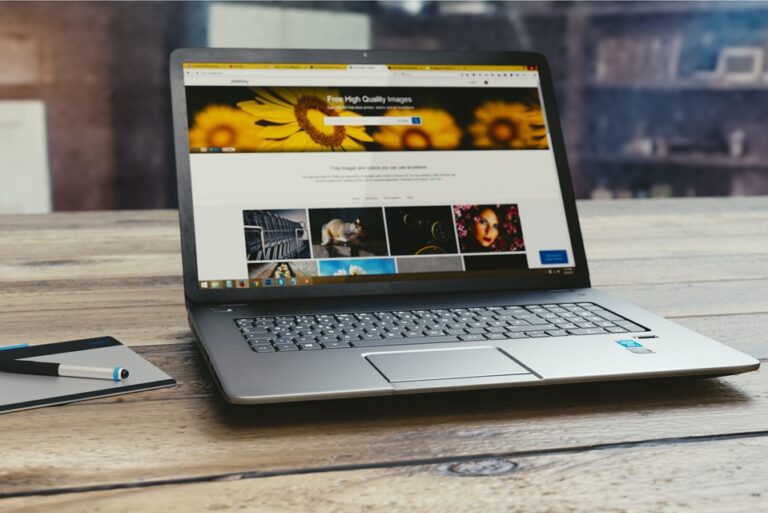In today’s fast-paced digital landscape, staying up-to-date with the latest trends in website design is essential for businesses and individuals looking to make a lasting impression on the web. Contemporary website design goes beyond mere aesthetics; it encompasses functionality, user experience, and responsiveness. In this blog post, we’ll explore the most influential trends shaping modern web design, ensuring your online presence remains not only visually appealing but also highly effective.
Minimalistic & Clean Layouts
Less is often more, and this holds true for Columbus Ohio website design. Contemporary websites favor minimalistic and clean layouts characterized by ample white space, simple navigation menus, and a focus on essential content. This trend not only makes websites visually appealing but also enhances user experience.
By eliminating clutter and distractions, minimalistic design allows users to focus on the core message or product. It makes navigation intuitive, reducing bounce rates and increasing user engagement. In a world filled with information overload, minimalistic web design offers a breath of fresh air.
Advanced Interactivity & Micro-Interactions
Websites today are designed to engage visitors actively. Advanced interactivity and micro-interactions play a crucial role in achieving this goal. These subtle design elements include animations, hover effects, dynamic scrolling, and interactive buttons that respond to user actions.
Micro-interactions provide feedback and create a more dynamic user experience. Whether it’s a heart icon that animates when liked or a progress bar that shows loading status, these small touches add an extra layer of user engagement, making websites feel more alive.
Bold Typography & Creative Fonts
Typography has evolved to become a key design element. Web designers are increasingly using bold typography and creative fonts to capture attention and convey brand identity. These fonts become a part of the overall design, communicating the website’s personality and style.
However, striking a balance between creativity and readability is essential. While unique fonts can be visually appealing, they must also ensure that users can easily read and understand the content. The right font choice can significantly impact a website’s overall aesthetics and message.
Use Of Immersive Multimedia Content
The integration of multimedia content, such as videos, audio, and interactive graphics, has become a hallmark of modern web design. Multimedia elements are used strategically to create immersive user experiences, convey information effectively, and keep users engaged.
Whether it’s a product demonstration video, an interactive 3D model, or a podcast embedded in a blog post, multimedia content adds depth and variety to websites. These elements not only convey information more effectively but also cater to different learning styles and preferences.
Incorporation Of AI & Chatbots
Artificial intelligence (AI) and chatbots have found their way into web design, revolutionizing user experiences. AI-driven personalization tailors content and recommendations to individual users, while chatbots offer immediate assistance, enhancing customer service.
AI-powered chatbots can answer frequently asked questions, guide users through the website, and even handle basic transactions. This automation not only saves time but also provides a seamless and responsive user experience, improving overall satisfaction.
Embracing Dark Mode Interfaces
Dark mode interfaces have gained popularity for both aesthetic and practical reasons. They offer a sleek and modern look that appeals to many users. Additionally, dark mode can reduce eye strain, save battery life on OLED screens, and provide a unique visual experience.
Users appreciate the option to switch between light and dark modes, and many websites now include this feature. It not only enhances user comfort but also showcases a commitment to providing choices and accommodating user preferences.
Focus On Accessibility & Inclusivity
Ensuring that websites are accessible to all users, including those with disabilities, is no longer optional but a necessity. The focus on accessibility and inclusivity has grown significantly in web design. Designers are adhering to accessibility standards and guidelines, making websites usable by everyone.
By incorporating features such as alternative text for images, keyboard navigation, and proper semantic HTML, websites become more welcoming and functional for users with disabilities. This commitment to inclusivity reflects positively on a brand’s reputation and values.
Sustainable Web Design Practices
Sustainable web design is gaining traction as environmental concerns rise. It involves optimizing site performance and energy efficiency. Practices like efficient coding, optimized images, and choosing green hosting solutions can significantly reduce a website’s digital carbon footprint.
As more users and organizations prioritize sustainability, adopting these practices not only benefits the environment but also demonstrates a commitment to responsible business practices. Sustainable web design aligns with the broader movement towards eco-friendly solutions in the digital realm.
Conclusion
As we’ve explored the key trends, from mobile-first design to sustainable practices, it’s evident that the modern web designer’s toolkit is diverse and innovative. By embracing these trends, web designers and businesses can enhance user experiences, drive engagement, and remain competitive and relevant in the ever-evolving digital space.


